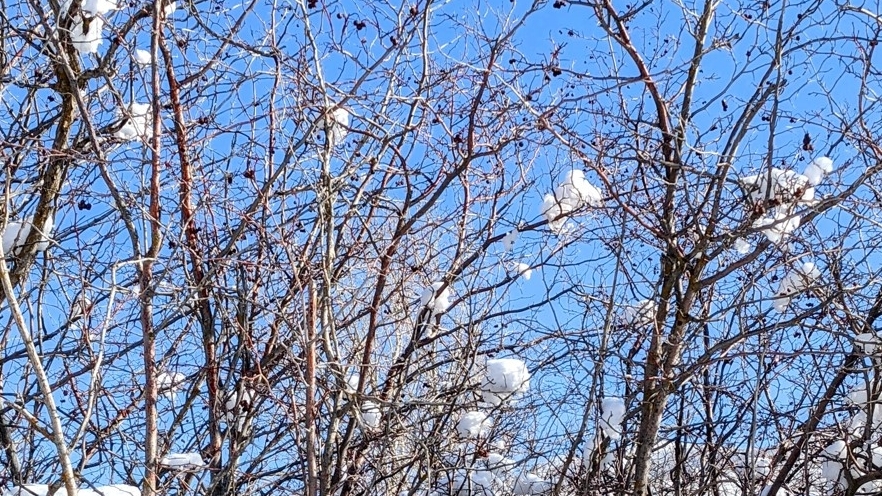The annual Tree ID Snowshoe Hike at Wasatch Mountain State Park was a delightful highlight this winter with Tree Utah! Blue skies and sunshine held the event gracefully, accented by picturesque views of the Wasatch range. People of all ages and backgrounds strapped on their snowshoes, teamed up into pods, and tramped through the fluffy snow as they looked for their corresponding labeled trees. While embarking upon tree identification in the winter provides its own unique challenges, it is also an enriching and informative process reminding us of nature’s profound resilience.
We encountered many different tree species native to Utah such as Chokecherry, Rocky Mountain juniper, Quaking aspen, Narrow leaf cottonwood, Hawthorn, and many more. We also enjoyed the secretive sounds of mountain streams trickling over rocks beneath mounds of snow and ice as we steadily carved a packed trail with our snowshoes.
Arborists and other experts from Tree Utah shared important information about trees along the way to deepen our understanding of the surrounding ecology. Black hawthorn Crataegus douglasii was one of the many trees that we learned about. It is native to North America and occurs throughout north western regions in forests, mountains, along streams, as well as open, dry areas.
Black hawthorn is a compact shrub-like tree in the Rosaceae family that grows slowly and prefers full sun. The alternating leaves are oval and serrated while the branches present thorns that can reach up to 2 cm in length. In the spring Black hawthorn blooms white flowers having five petals with multiple styles and stamens. It is pollinated by many kinds of insects including bees, beetles, as well as wind.
Black hawthorn produces small fruit about 1 cm across that vary in color from red to dark purple (almost black) as they mature. The fruit has 3-5 small seeds which contain cyanide. Black hawthorn fruit has been used by many Native American tribes and is an important food source to wildlife such as birds, bears, deer, rodents, and insect larvae. The thickets of hawthorn provide protection and habitat for wildlife as well. It is said that hawthorn can help heal a broken heart and is used in western herbalism.
Learning about tree species such as Black hawthorn with Tree Utah at Wasatch Mountain State Park this winter was rewarding and deepened a stronger sense of ecology and belonging in this unique region. Knowing that winter’s temporary dormancy will soon be broken with pulsing growth and life brings much hope and anticipation for spring. Many more educational events and opportunities are on the horizon at Tree Utah as tree planting season approaches!
About the Author
Donda enjoys planting trees, doing events and writing for Tree Utah which is in direct alignment with her nature ethos. She is also the author, owner, and creator of Bee Curious, https://www.beecurious.bio/ which she produced as a result of her inclinations to explore, discover, and wonder into the phenomenon of nature. Donda is a teacher, gardener, hiker, journalist, herbalist, biomimic, photographer, cook, dancer, biker, and lover of nature. She enjoys facilitating, collaborating, and celebrating in people following their curiosity for the simple sake of loving to learn and connecting with nature.



